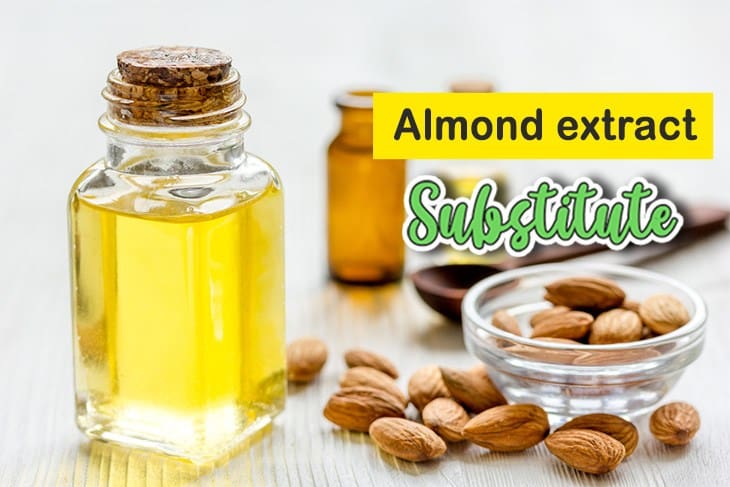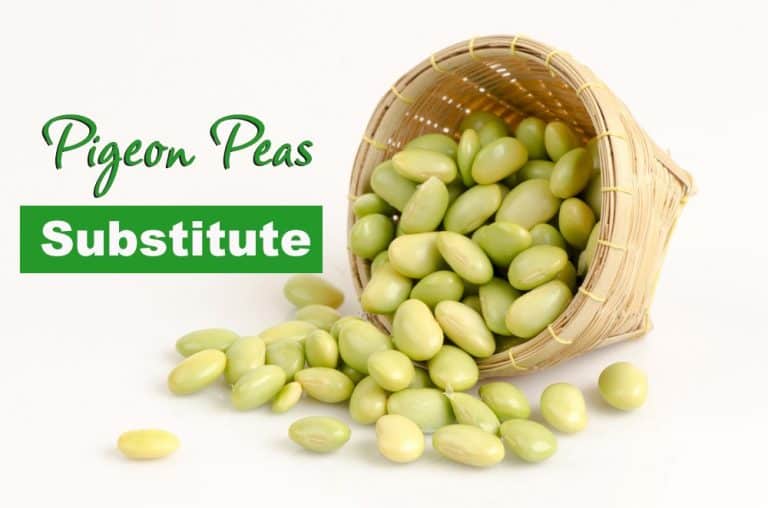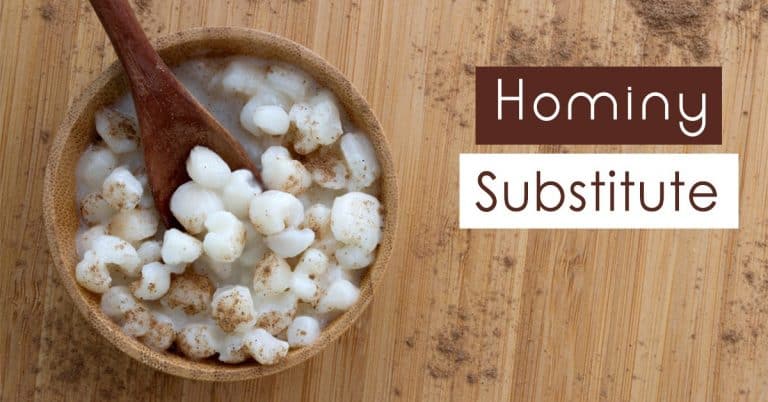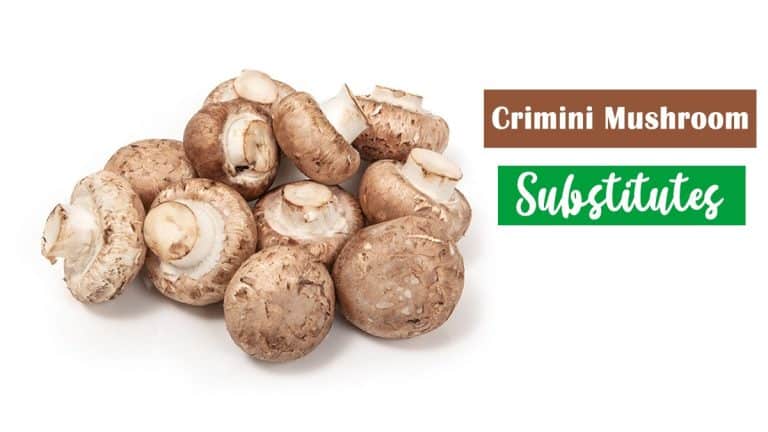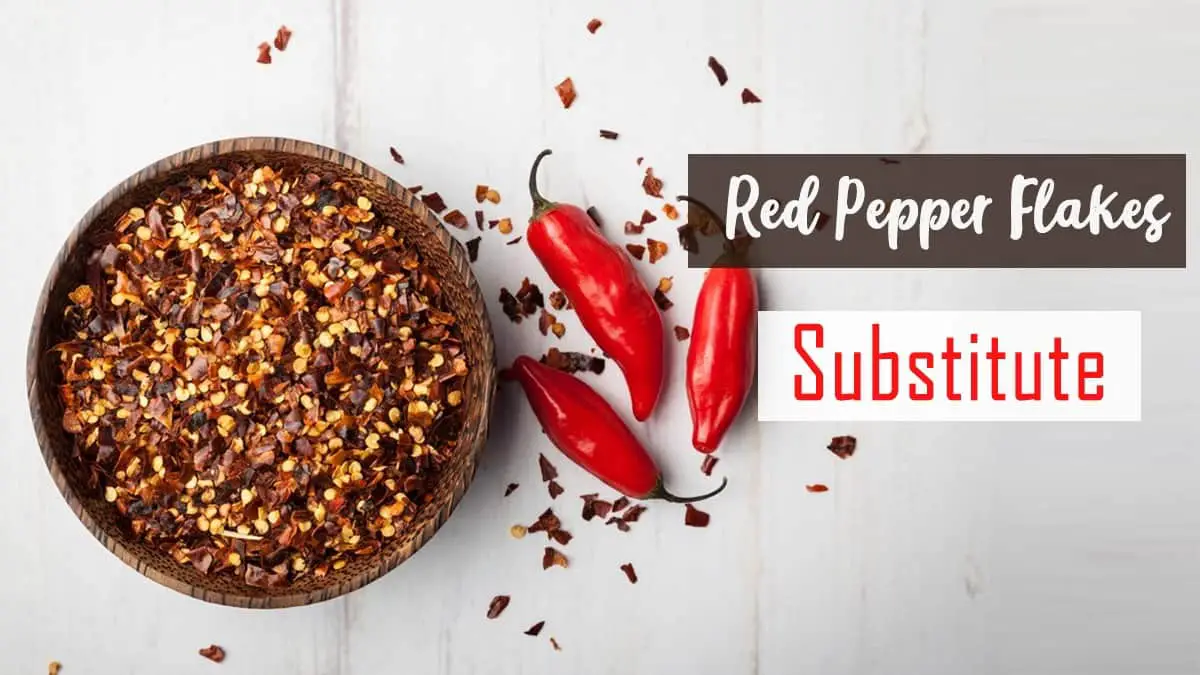
Red pepper flake or chili flake is one of the most popular spices in international cuisine. Especially in countries with famous cuisine such as China, India, Mexico, Thailand, red pepper flakes seem indispensable in almost all dishes.
Suppose that you intend to cook Chilli Con Carne for your dinner, but no more red pepper flakes are left in your kitchen. What will you do?
No need to rush to the grocery store. Instead, this article will help you with feasible solutions by pointing out the 5 most common substitutes for red pepper flakes. Let’s begin!
Interesting Facts About Red Pepper Flakes
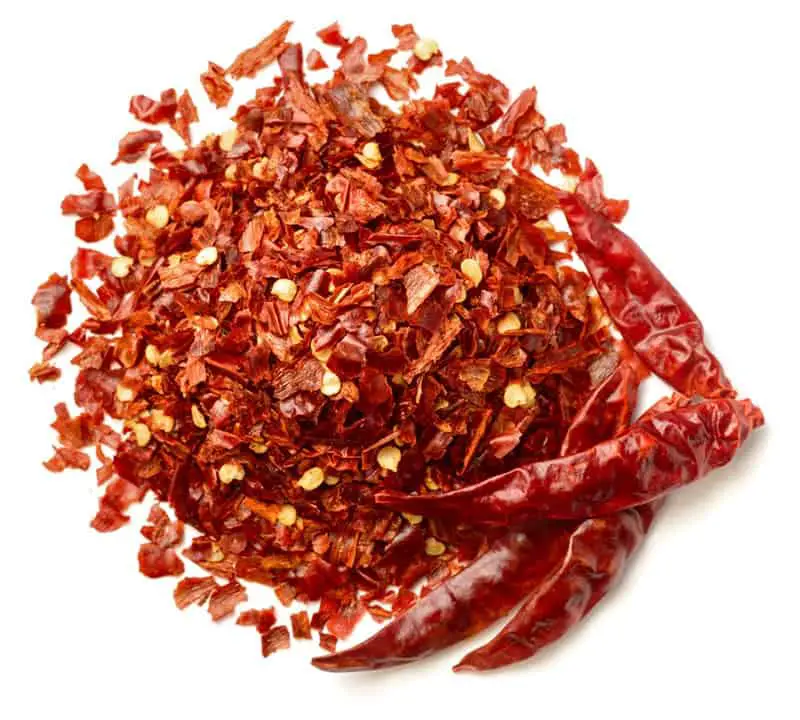
Before listing down a few substitutes for red pepper flakes, I would like to show some interesting facts about red pepper flakes and spicy foods in advance.
Red pepper is a fruit and will also spoil quickly if not stored properly. Therefore, to keep red peppers for a longer time, people usually dry them and crush into red pepper flakes or ground them into chili power to store. These ways will help preserve red peppers longer but still keep original taste.
In almost all people’s thinking, red peppers and spices made from them seem unhealthy; however, many studies reveal that eating red pepper at a moderate level will give many benefits for the health. On the other hand, when consuming chili pepper with too high pungency, the favorable effects are lost.
First, red peppers help in boosting your immune system. Everyone knows that vitamin C is a great nutrient to boost the immune system. And red pepper is a rich resource of vitamin C.
Second, red peppers support weight loss. The main compound found in all red peppers is capsaicin. This compound has a metabolism-boosting promotion, helping to burn more calories. Moreover, it also helps to decreases hunger and increases satiety intake.
Third, red peppers affect keeping your heart healthy. A study has shown that a moderate daily dose of chili peppers decreases glucose, cholesterol levels, especially LDL (low-density lipoprotein) – a type of bad-for-heath cholesterol, which increases the risk of heart disease.
Fourth, red peppers affect the body as an effective pain reliever. You must have heard somewhere that spicy taste is not a taste but the painful feeling of your tongue and mouth caused by capsaicin. When capsaicin touches the mouth and tongue, it makes a slight heat and stinging feeling. Over time, your nerves will be accustomed to and decrease sensory pain.
5 Common Household Substitutes For Red Pepper Flakes
In general, adding red pepper flakes or any of their alternatives into a recipe will make the dish look more delicious with the beautiful color, create a necessary heat, enhance the taste of each ingredient and finally promote the tasty feeling.
Handmade red pepper flakes, Cayenne pepper, Gochugaru, Chilli paste, Hot sauces are the five best substitutes for red pepper flakes. All of them bring back the heat and the spicy taste for your recipe. The only difference is spicy level, and it is a note on using them interchangeably.
1. DIY Red Pepper Flakes (Made From Dried Pepper)
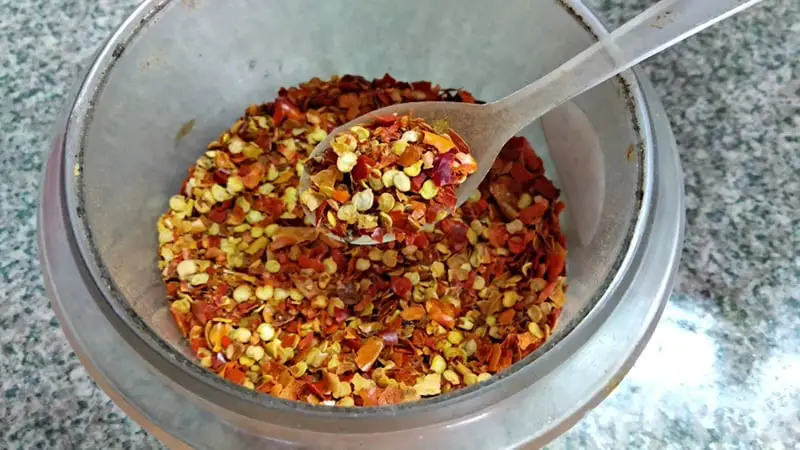
It is not difficult to make red pepper flakes by yourself at home. All you need are dried red peppers (of course) and a spice grinder or a blender.
However, if you only have fresh chilies in your kitchen, how can you dry them quickly?
The natural chili drying way is to hang chilies up in a dry location that gets sunshine. Yet, it takes from several days to several weeks to dry chilies completely. What a time-consuming way!
Another quicker way is to dry chilies in an oven. This will take at least 6 hours or longer to dry depending on the type and size of the chilies – still better than the first method. Follow this process:
- Set up the temperature at 100 – 130 degrees.
- Place chili whole (small peppers) or sliced (large peppers) on a tray and wait for at least 6 hours.
A note for the case you dry chili whole is that during 6 hours, you had better turn chilies over twice or three times so that the heat spreads evenly at both sides. Once chilies crumble or break apart easily by your fingers, they are dry enough to crush into chili flakes.
The quickest way to have dry chilies from fresh ones is by using a dehydrator. The dehydrator only takes about 5 hours to dry the chilies completely.
Above are three common ways to dry red peppers from the most time-consuming but the cheapest way to the most time-saving but the most expensive way for your reference.
After having dry red peppers, the next step is to put them into a spice grinder and crush them into red pepper flakes.
The advantage of this way is that you can mix any chili type into a mixture of your favorite red pepper flakes. Moreover, your handmade red pepper flakes are clean and preservative-free.
2. Cayenne Pepper
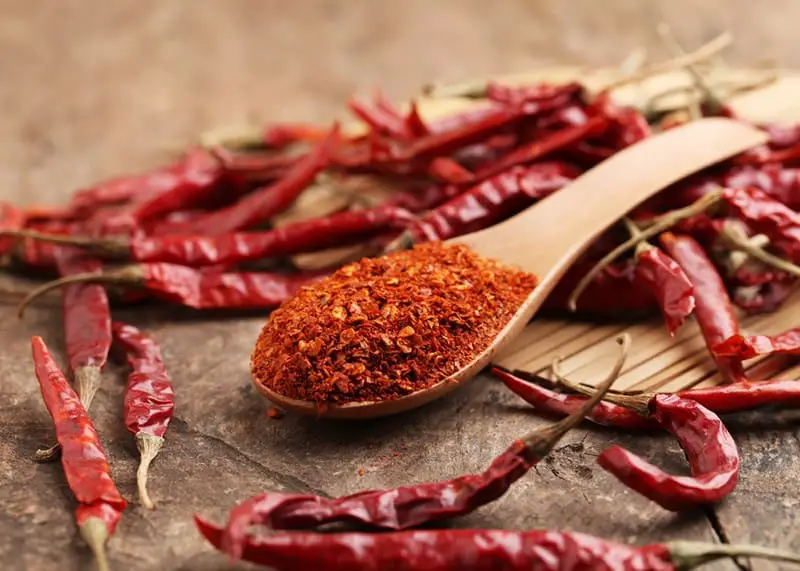
Cayenne pepper is also a type of chilies native to Central and South America. It is the most common spice used in Mexican cuisine.
Compared to other types in the chili family, cayenne pepper seems the best alternative to red pepper regarding flavor. The best ratio between cayenne pepper and red pepper flake should be 1:2 or 3:4 to achieve the same heat. However, do not use a 1:1 ratio since cayenne pepper is much hotter in taste compared to red pepper flakes.
Cayenne pepper is also good for your health if you use it in moderation. For example, a study suggests that people will feel more energetic after meals added cayenne pepper. Besides, cayenne pepper also boosts digestion, slows intestinal gas, stops stomach pain, stops diarrhea, and takes effect as a natural remedy for cramps as well.
Maybe you need: Best 15 Cayenne Pepper Substitute Options For Your Dishes
3. Gochugaru
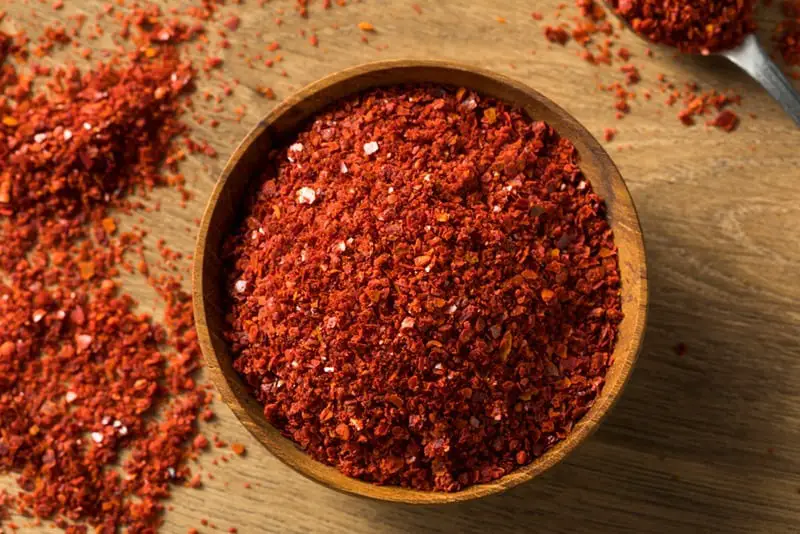
Another substitute for red pepper flakes from Korea is Gochugaru, considered a Korean version of red pepper flakes.
In Korean, Gochu means chili pepper, and Garu means powder, so the literal meaning of this name is chili, powder.
Korean people also make Gochugaru from dry chilies by the same process as homemade red pepper flakes. The only difference is that Gochugaru only consists of crushed dried chili peppers being removed seeds.
Maybe due to the absence of chili seeds, Gochugaru tastes milder than standard red pepper flakes. It means you need to add more amount of Gochugaru than red pepper flakes into dishes to get the same flavor. The suitable ratio between Gochugaru and red pepper flakes should be 1:2.
As a staple spice in Korean cuisine, Gochugaru appears in almost all Korean recipes, especially in the Kimchi recipe. It can replace red pepper flakes or even cayenne peppers, but no substitute can replace it in Korean cuisine. Thus, Gochugaru seems to become the symbol and the representative for the spiciness of Kimchi in particular and Korean cuisine in common.
4. Chilli Paste
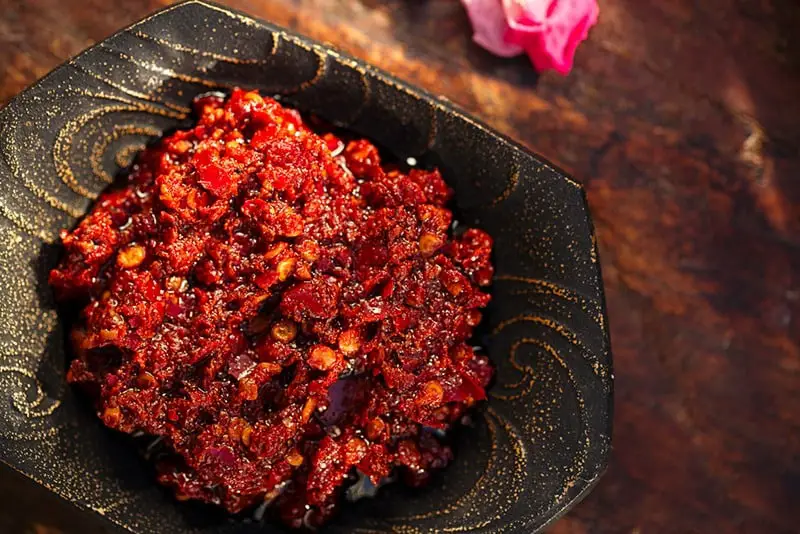
Chilli paste and hot sauce are the two most familiar spices in every kitchen, and they are both great substitutes for red pepper flakes. Chilli paste is a paste made of crushed chili peppers mixed with other ingredients like garlic and onions.
Because the ingredients in chili paste contain a few other ingredients, the taste of chili paste seems the mildest of all substitutes of red pepper flakes. That makes chili paste especially suitable for recipes like stews for extra oomph.
In addition, you can refer to the following recipe to make your chili paste at home to have a clean and healthy chili paste.
- First, prepare ingredients including chilies, garlic, onions, olive oil.
- Second, put all ingredients into a spice grinder to grind into a finely-chopped mixture.
- Third, heat olive oil in a pan over high heat and put the above mixture into the oil. Low heat and cook in 20 minutes. Stir occasionally and add more olive oil if need to avoid burning the mixture.
- Fourth, add seasonings, stir continuously and cook for 5 minutes before turning off the stove.
- Fifth, cool and transfer to a jar and refrigerate.
If you like a chili paste with a smooth texture, you can transfer the mixture achieved after four steps to the spice grinder to crush it one more time.
5. Hot Sauces
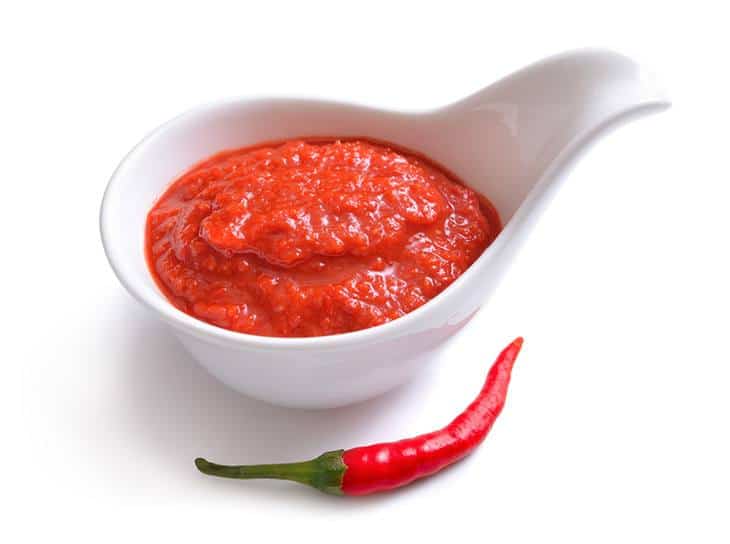
Hot sauce is a common household substitute for red pepper flakes you can find easily in your kitchen. A few drops of hot sauce are enough for the alternative. Hot sauces bring back the dishes the moderate sweetness and spiciness, and beautiful color.
Like chili paste and red pepper flakes, you can make the hot sauce by yourself at home. The necessary ingredients contain chilies (any of your well-liked type), garlic, onion, especially tomatoes (to make the natural sweetness for hot sauce). The processing is similar to make chili paste. Removing chili seeds is optional.
Compared to red pepper flakes and their substitutes, the hot sauce seems more well-loved by people even when they are not spicy food lovers. Due to the sweetness of tomatoes, people usually use hot sauce as a spice served directly with foods like French fries, fried chicken.
Frequently Asked Questions
We encountered these interesting questions while researching, we hope that you can find some uses from them.
How Long Will Handmade Red Pepper Flakes Keep?
Both handmade red pepper flakes and dry chilies can keep well up to a year if you properly store them in an airtight container under refrigerated preservation. Yet the taste will be at its best within the first 3-6 months.
Chilli paste and hot sauce can only well within 2 – 3 months under refrigerated preservation, and their tastes will be at their best within the first month.
Moreover, the process of making chili paste and hot sauce is not difficult and time-consuming. Therefore, you should give priority to store dry chili in your refrigerator.
What Is The Best Ratio Among Red Pepper Flakes And Their Substitutes?
The ratio is different depending on each substitute, but not fixed as well as each person has a different taste. Anyway, you can refer to the following information. The average rate between cayenne pepper and red pepper flake is 1:2 or 3:4 while it is 1:2 for red pepper flakes and Gochugaru or hot sauce. The rate is 1:1 for red pepper flakes and chili paste.
Where Can I Buy Gochugaru?
Nowadays, you don’t need to come to Korea to buy Gochugaru. This spice is on sale in almost all supermarkets at affordable prices.
Conclusion
Above are the top 5 popular substitutes for red pepper flakes for your reference. Opting for a suitable alternative for red pepper flakes will depend on how hot the recipe requires and how spicy you can suffer.
To prevent health issues, make sure that you use red pepper flakes and their substitutes at a moderate level.
All these substitutes for red pepper flakes can be found easily at grocery stores and online markets. Yet, consider its level of pungency and cooking requirements carefully. Or else, it can lead to disruption in the taste of your desired meals.
If you find this article helpful, do not hesitate to share it with your friends and family. Also, if you know more other substitutes for red pepper flakes, please share them in a comment for others.

